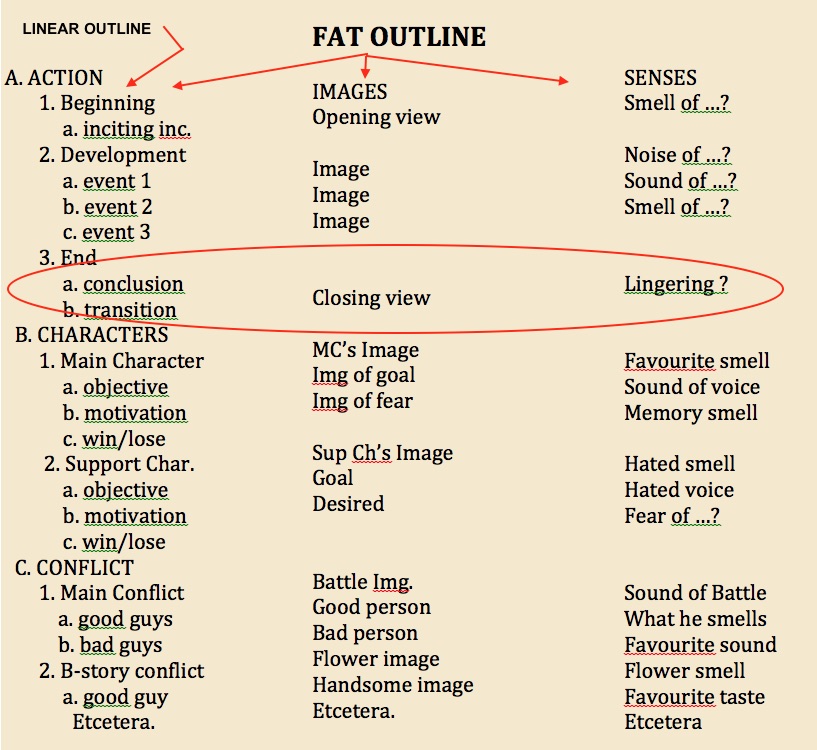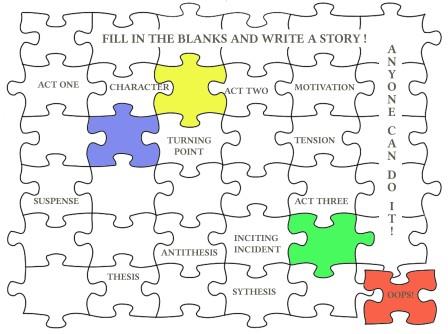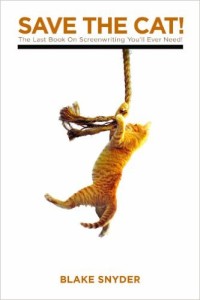
Okay, everybody knows about outlines. I used the letters-and-numbers version above. Bureaucracies, of course, like the specificity of decimals, “Please refer to section 1.1.4.5.” MSWord will automatically format these for you, if it doesn’t drive you nuts in the process by refusing to do it any other way.
I also freely admit that I never start my writing with an outline. But like Dean Lappi in his IU article, To Outline or Not to Outline, I always reach a stage in my project when I start an outline, because it’s impossible to keep it all straight in my head. My outlines in the past have been linear, like the left-hand column above.
We’re Always Improving
However, I have just learned about another kind of outline that has the potential to change my writing style for the better, so I’m sharing it with you. It’s called the Fat Outline. Continue reading “Use a “Fat Outline” for Powerful Writing”

 The structure of every story follows the pattern of the average human emotional experience. That pattern is the same, whether it’s a first kiss, eating a chocolate bar, having sex, or reading a full-length novel. Hollywood scriptwriters have found this pattern, follow it, and often make great heaps of money for their producers by doing so.
The structure of every story follows the pattern of the average human emotional experience. That pattern is the same, whether it’s a first kiss, eating a chocolate bar, having sex, or reading a full-length novel. Hollywood scriptwriters have found this pattern, follow it, and often make great heaps of money for their producers by doing so.
